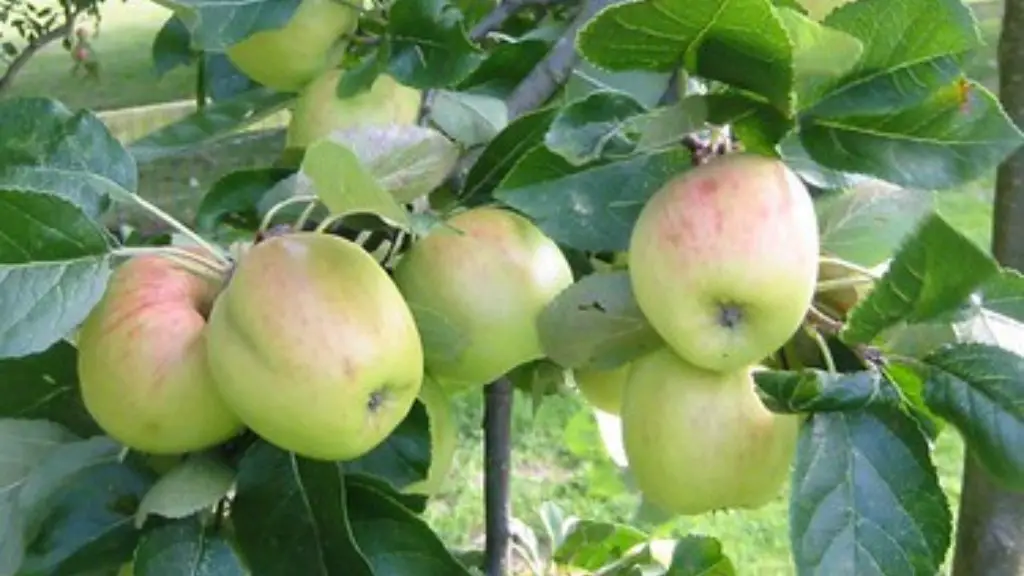Pruning is an important part of caring for an apple tree. It helps the tree stay healthy and produce more fruit. But how do you prune an old apple tree?
There are a few things to keep in mind when pruning an old apple tree. First, you need to remove any dead or diseased branches. These can be identified by their dry, blackened appearance.
Next, you need to thin out the apple tree’s canopy. This will help increase air circulation and sunlight penetration, which will promote fruit production.
Finally, you need to trim back any overly long or wayward branches. This will help the apple tree maintain a strong structure and produce high-quality fruit.
With these tips in mind, pruning an old apple tree is a simple and effective way to keep it healthy and productive.
If your apple tree is more than 10 years old, it’s probably time for a good pruning. Most fruit trees, including apple trees, benefit from an annual pruning. But an old, neglected tree will need a more aggressive approach.
The first thing you need to do is remove any dead, diseased, or damaged wood. Cut these branches back to the point of healthy wood.
Next, you’ll need to thin out the canopy of the tree. This will allow more light and air to reach the inner parts of the tree and encourage new growth. Start by pruning away any watersprouts, which are fast-growing, vertical branches that lack fruit.
Then, remove any crossing, rubbing, or crowded branches. Make your cuts at a 45-degree angle, just above a bud or branch.
Finally, cut back the remaining branches by one-third to one-half their length. This will encourage the tree to produce more fruit.
When you’re finished pruning, your apple tree should have an open, airy structure.
How do you prune an old overgrown apple tree?
Apple trees need to be pruned every year to maintain their shape and size. Pruning also helps to promote new growth and keep the tree healthy. When pruning an apple tree, you should remove all dead wood, suckers from the base of the tree, and thin out the branches on each scaffold branch. You should also choose approximately six of the best branches to keep as scaffold branches.
Pruning an old tree can bring it back to health and let you reap the fruit of your labor. Start by making cuts at the top of the tree, and work downward so that falling wood doesn’t break limbs you’ve already pruned. A clean, smooth cut will heal quickly.
How do you take care of a mature apple tree
Apple trees need a lot of water, especially when they are bearing fruit. Make sure to water your apple trees regularly and deeply. Pruning your apple trees on a yearly basis will help them to produce better fruit. Provide your apple trees with adequate fertilizer, and put organic mulch around your apple trees to help retain moisture.
If you have an older fruit tree that you would like to renovate, the first step is to prune out all of the broken and dead branches, as well as any sucker growth around the bottom of the trunk. Once this is done, you will be able to see the general form of the healthy portions of the tree, which will help you to determine how to proceed with the rejuvenation process.
How do you prune a 100 year old apple tree?
Pruning apple trees is important to maintain the health of the tree and to improve fruit production. To prune an apple tree, start by removing any dead, damaged, or diseased branches. Then, improve air circulation by removing scaffold branches. Next, prune sail branches and snip water sprouts. Finally, shorten scaffold branches to improve the shape of the tree.
Apple tree pruning is tricky, but it’s very important if you want the tree to be healthy and productive. Some say the best months to do pruning apple trees are between mid-October to December, but actually you can perform it even during the summertime.
How far back do you prune an apple tree?
Pruning is a vital step in maintaining a fruit tree. By pruning to a more upward-growing branch or back to the main trunk, you encourage the tree to produce more fruit. shortening the previous year’s growth on each of the main branches by a quarter to one-third, cutting just above an outward-facing bud also helps to form fruiting spurs (stubby shoots with fruit buds).
When pruning trees, it is important to remember that you can remove up to 25% of the canopy in any one year. If more needs to be removed, save the rest for subsequent years. Although it may be tempting to do it all in one go, trees will respond to excessive pruning by producing lots of upright, vigorous watershoots that will simply overcrowd the crown again.
Will an apple tree grow back if cut down
Apple trees can be propagated by rooting hardwood cuttings taken from the tree. If you cut down an apple tree, you can take a hardwood cutting from the stump and root it to create a new tree. However, the new tree will not necessarily produce the same type of fruit as the original tree. It is also possible that the new tree will be a dwarf variety.
The average healthy and well cared apple tree can live from 50 to 80 years. However, there are striking exceptions to this rule. Some apple trees have been reported to live for more than a century. An apple tree rarely produces many fruits after its 50th year of age.
How old is a mature apple tree?
Standard or full-size apple trees take four to eight years to mature, but they are well worth the wait because they produce a large quantity of fruit. If you take good care of your mature trees, they will provide you with an abundance of delicious apples.
When pruning, you should aim to remove weak, diseased, injured, or narrow-angle branches. You should also remove the weaker of any crossing or interfering branches, and one branch of forked limbs. Upright branches and any that sweep back inward toward the center of the tree should also be removed.
How far back can you cut a fruit tree
Cutting back the trees means that you are cutting off the new growth from last year. This new growth is typically marked by a wrinkly ring of bark encircling each stem. Depending on the vigor of the tree, this new growth can be anywhere from two inches to four feet back from the tip of each branch.
Fruit trees are often pruned in late winter to help shape the tree. Summer pruning can also be done to help control growth. Dead, diseased, or dying branches can be removed at any time of year.
Can you prune fruit trees in the fall?
Pruning is a vital tree maintenance practice that helps keep trees healthy and safe. It is best to wait until a tree is dormant before pruning, as this is when the tree is least stressed. dormant pruning is also easier for you, as the leaves have fallen and you can see where to make your cuts.
Tree topping is the removal of the entire uppermost portion of a tree. Topping a vertical branch encourages vegetative growth necessary for development of the tree and creates a bushing effect. Topping horizontal branches is done to renew fruiting wood and to thin off excessive fruit. Thinning vertical branches opens the tree to more light.
Final Words
Old apple trees should be pruned in late winter or early spring, before new growth begins. Pruning too early in the season can remove buds that would have otherwise produced fruit. Start by removing any dead, diseased, or broken branches. Next, thin out the canopy by removing any branches that are growing inward, crossing, or rubbings against each other. Finally, cut back any remaining branches by one-third to one-half their length.
There are a few different ways that you can prune an old apple tree. You can do a simple thinning, which is where you remove about a third of the branches. This will help the tree to focus its energy on the healthier branches. You can also do a renewal pruning, which is where you remove all of the branches that are more than 30 years old. This will help the tree to produce new growth.




